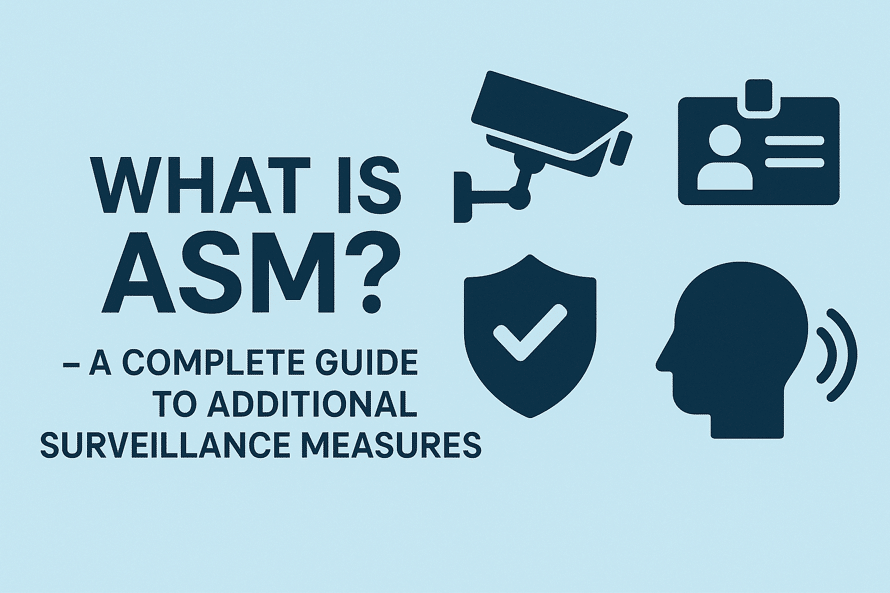
Additional Surveillance Measure, or ASM, is a tool that stock exchanges use to monitor high-risk stocks or those likely to experience rapid price changes. Besides, by paying closer attention, it aims to protect consumers and maintain a fair market. Many new investors want to know what is ASM and how it affects stock trading. Let’s understand these details.
What Does ASM Stand For in the Stock Market?
ASM is a regulatory system that stock markets use to monitor certain companies that are acting in a manner that doesn’t appear normal. By following stricter rules and promoting market stability, ASM aims to prevent price abuse, reduce gambling, and protect investors.
Why Was ASM Introduced in the Indian Stock Markets?
The ASM is an initiative by SEBI and recognized stock exchanges aimed at protecting buyers and maintaining market integrity. There are two types of ASM stocks: long-term and short-term. The kind of ASM depends on the level of monitoring required.
How ASM Works in the Indian Stock Market
ASMs are rules that SEBI and stock exchanges, such as the NSE and BSE, follow. Besides, by enforcing stricter regulations and maintaining a closer eye on high-risk or risky stocks, ASM aims to enhance market ethics, ensure fair dealing, and protect investors.
Criteria for Placing Stocks under the ASM Framework
India’s stock market is expected to be worth US$1.43 trillion by 2025. So, it’s important to understand what ASM is. Besides, stocks are added to the ASM list based on specific criteria that indicate unusual trading behavior or potential risks. The SEBI and stock exchanges keep tabs on the following criteria:
- Close-to-close price variation
- Delivery percentage
- Client concentration
- High-low price variation
- Number of unique PANs involved
- Market capitalization
- Price-to-Earnings (PE) ratio
- Changes in volume
- Volume variation
Types of ASM Frameworks
Before buying stocks that can fluctuate significantly in price, it will be useful to understand what is ASM and why stock exchanges have it. Besides, in the stock market, the ASM list comprises various regulatory tools used to monitor and manage shares that exhibit unusual trading patterns or pose potential risks.
- Stage 1: Securities are first selected for ASM based on risk and volatility factors that the market has already established.
- Stage 2: The chosen stocks are subject to surveillance measures such as price bands, higher margins, or more information requirements.
- Stage 3: The mentioned stocks are regularly checked and monitored to see how traders act and how the market reacts to the scrutiny.
Impact of ASM on Stock Trading
If you want to know what is ASM, remember that it’s a tool to keep an eye on and manage unusual changes in stock prices. Additionally, higher margins and price bands for ASMs make investors less likely to trade on speculation, resulting in more cautious investment behavior.
ASM and Market Volatility
ASM lists help stock exchange traders as they actively monitor actions that are misleading or risky. This makes the market fair for buyers and maintains transparency. ASM also protects investors’ best interests by monitoring sudden and unusual price changes in highly volatile stocks.
Difference Between ASM and Other Regulatory Frameworks
ASM is a specialized governing tool designed to monitor and manage the trading of certain assets whose prices fluctuate in unusual or unpredictable ways. Other systems, such as those for environmental laws or financial reporting, cover different types of businesses.
ASM vs. GSM (Graded Surveillance Measure)
ASM tends to focus on stocks that exhibit unusual price changes or trading activity. On the other hand, GSM targets companies that aren’t performing well financially, using a tiered system of tightening limits.
ASM vs. F&O Ban
ASM focuses on specific stocks that are selling or changing in unusual ways. When an F&O ban is implemented, trading in futures and options on a stock is suspended. This stops derivatives, but trading on the cash market remains.
Stocks under ASM – Examples from Recent Years
If you search online for what is ASM, you will find stock exchange news and updates. Its primary purpose is to assist buyers and experts in making informed decisions. The securities below GSM values show possible underperformance or danger. The method helps buyers and financial advisors avoid stocks that may not yield good returns.
Notable ASM-Listed Stocks in 2023–2024
- Ambuja Cements Ltd: Ambuja has been a major Indian cement company since 1993. Its main products are cement, concrete, and sediments, which it sells in 80 different countries. Ambuja exited short-term Additional Surveillance Measure (ASM) on Feb. 10, 2023, according to Trendlyne.
- Adani Power Limited (APL): Adani Power is India’s biggest private thermal power company. It also runs a 40-MW solar plant in Gujarat and has been trading on the stock market since 2009. Adani Power exited short-term ASM on June 27, 2024 and exited long-term ASM on April 26, 2024, according to Trendlyne.
Sectors Most Affected by ASM
ASM means that the banking, IT, FMCG, pharmaceutical, and chemical industries are being closely monitored. To prevent data leaks, companies are tightening digital controls by blocking USB drives, restricting photo uploads, and limiting email attachments.
How to check if a Stock is Under ASM?
Stock exchanges employ ASM to protect buyers and prevent prices from fluctuating too rapidly. You can avoid dangerous deals by seeing if a stock is under ASM. Here is an easy way to check if a stock is on the ASM list.
NSE/BSE Websites
You can refer to the official lists posted on the websites of the National Stock Exchange (NSE) and Bombay Stock Exchange (BSE). It will help you determine if a stock is subject to an Additional Surveillance Measure (ASM).
Stockbroker Platforms
You can also ask your dealer or use a trade tool that shows stock status. Besides, these stockbroker platforms will often indicate whether a stock is under ASM.
Regulatory Announcements
Visit the ASM reporting page for NSE or BSE to see if a stock is under ASM. You can also keep an eye on these alerts through the trade app or the regulatory news site for your firm.
Should You Invest in ASM-Listed Stocks?
As an investment, ASM can have a direct impact on your trading strategy. Besides, if a company is under ASM, you may need to deposit more money to trade it. This means more money upfront and possibly a smaller return on investment.
Pros and Cons of Investing in ASM Stocks
As a result of smaller bands and margins, ASM reduces price fluctuation. This stabilizes the market and protects it from manipulation. However, high margin requirements and price bands make speculative trades more expensive.
Trading Strategies for ASM Stocks
Prepare for increased profit requirements and potential cash flow issues. Do not include too many ASM stocks in your portfolio. Besides, keep an eye on the stock’s performance and any updates from the SEBI or stock exchanges. Your trade plans can go awry if the stock’s ASM standing changes.
Conclusion
Understanding what is ASM can help you avoid poor trades and protect your money. Besides, anyone who invests in the stock market needs to understand ASM. Not only does it help you be smart in times of market instability and dishonest behavior, but it also helps you make wise business choices.
FAQs
1. What is the full form of ASM in the stock market?
You must have a good understanding of what ASM is to keep your money safe. ASM is short for Additional Surveillance Measures.
2. Why are stocks placed under ASM?
ASM is a tool that SEBI and stock exchanges such as NSE and BSE use to prevent stocks from speculating excessively and fluctuating too rapidly. Besides, the goal is to protect investor interest and make the market transparent.
3. How does ASM impact stock prices and trading volumes?
Stock markets employ a system called the ASM, which can significantly impact stock prices and trade flows. Besides, its goal is to prevent speculative trading and excessive price swings. This could mean that stocks affected have less liquidity and more price fluctuations.
4. How long do stocks stay under the ASM framework?
Under the ASM system, stocks can usually be sold in stages after at least 90 calendar days. The exact length of time can change because the exit is also open to review and depends on whether the stock continues to meet the requirements for ASM participation.
5. Can ASM stocks be traded normally?
To trade these stocks, you’ll need to put down more money. Additionally, a stock’s price can only fluctuate by a certain amount in a day.
6. What is the difference between ASM and GSM?
Both try to keep investors safe, but ASM focuses on stocks that exhibit unusual price changes and high trading volumes. At the same time, GSM targets stocks that are weak and don’t trade frequently, often due to financial difficulties.
7. How to check if a stock is under ASM?
To determine if a stock is under Additional Surveillance Measures (ASM), refer to the official lists from the National Stock Exchange (NSE) and the Bombay Stock Exchange (BSE).
8. Is it safe to invest in ASM stocks?
ASM aims to maintain market stability by identifying and addressing any manipulation or excessive speculation in specific stocks. It can be risky to invest, but ASM establishes rules to help maintain stable stock prices and mitigate the risks associated with particular stocks.
9. What is the impact of ASM on short-term trading strategies?
ASM can change how people trade in the short term. Besides, it can make trading more expensive, reduce the number of stocks available to buy or sell, and may even alter stock prices. Besides, ASM has stricter trading rules and requires more capital to trade.




